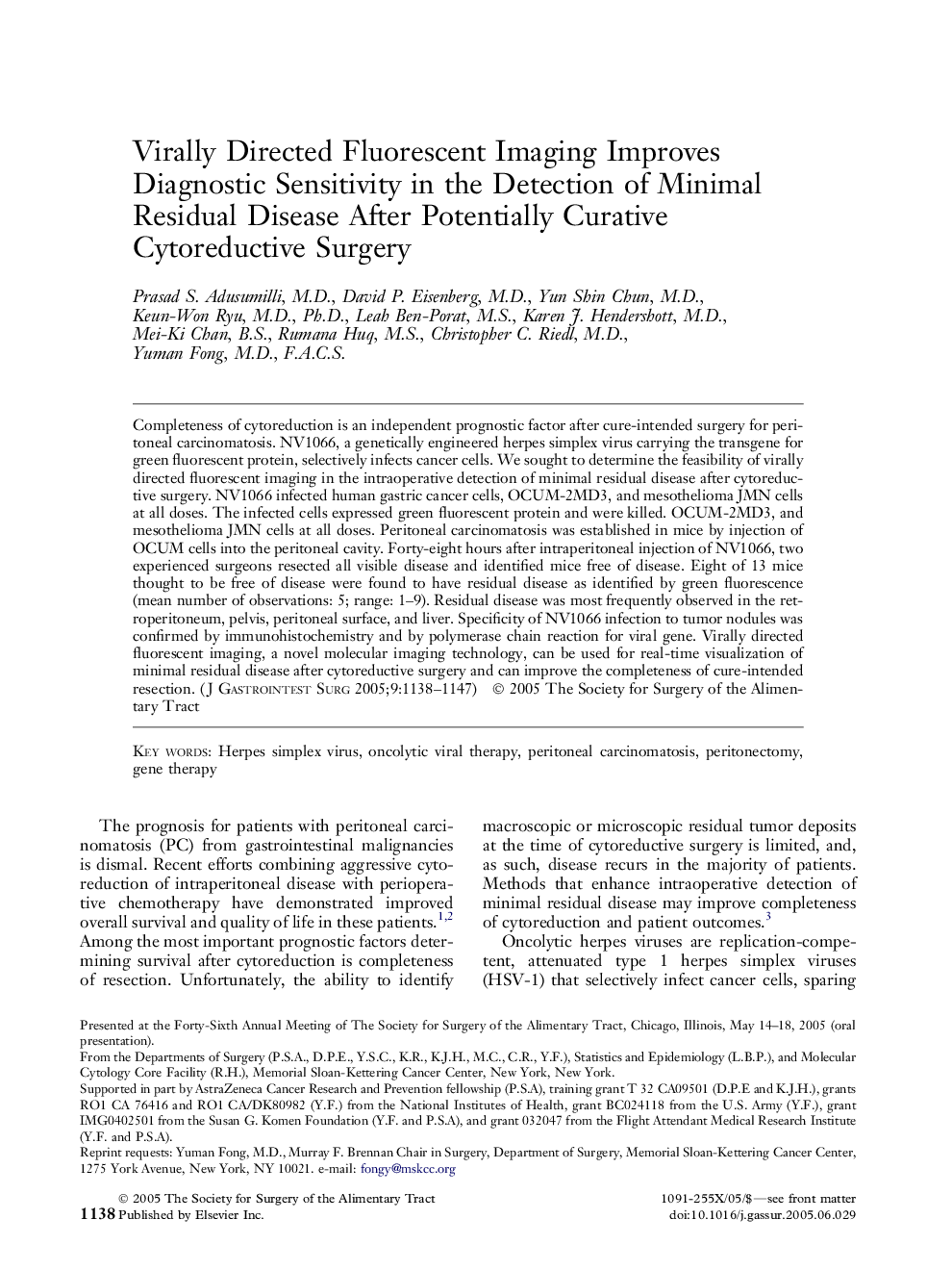| Article ID | Journal | Published Year | Pages | File Type |
|---|---|---|---|---|
| 9401301 | Journal of Gastrointestinal Surgery | 2005 | 10 Pages |
Abstract
Completeness of cytoreduction is an independent prognostic factor after cure-intended surgery for peritoneal carcinomatosis. NV1066, a genetically engineered herpes simplex virus carrying the transgene for green fluorescent protein, selectively infects cancer cells. We sought to determine the feasibility of virally directed fluorescent imaging in the intraoperative detection of minimal residual disease after cytoreductive surgery. NV1066 infected human gastric cancer cells, OCUM-2MD3, and mesothelioma JMN cells at all doses. The infected cells expressed green fluorescent protein and were killed. OCUM-2MD3, and mesothelioma JMN cells at all doses. Peritoneal carcinomatosis was established in mice by injection of OCUM cells into the peritoneal cavity. Forty-eight hours after intraperitoneal injection of NV1066, two experienced surgeons resected all visible disease and identified mice free of disease. Eight of 13 mice thought to be free of disease were found to have residual disease as identified by green fluorescence (mean number of observations: 5; range: 1-9). Residual disease was most frequently observed in the retroperitoneum, pelvis, peritoneal surface, and liver. Specificity of NV1066 infection to tumor nodules was confirmed by immunohistochemistry and by polymerase chain reaction for viral gene. Virally directed fluorescent imaging, a novel molecular imaging technology, can be used for real-time visualization of minimal residual disease after cytoreductive surgery and can improve the completeness of cure-intended resection.
Related Topics
Health Sciences
Medicine and Dentistry
Surgery
Authors
Prasad S. M.D., David P. M.D., Yun Shin M.D., Keun-Won M.D., Ph.D., Leah M.S., Karen J. M.D., Mei-Ki B.S., Rumana M.S., Christopher C. M.D., Yuman M.D., F.A.C.S.,
